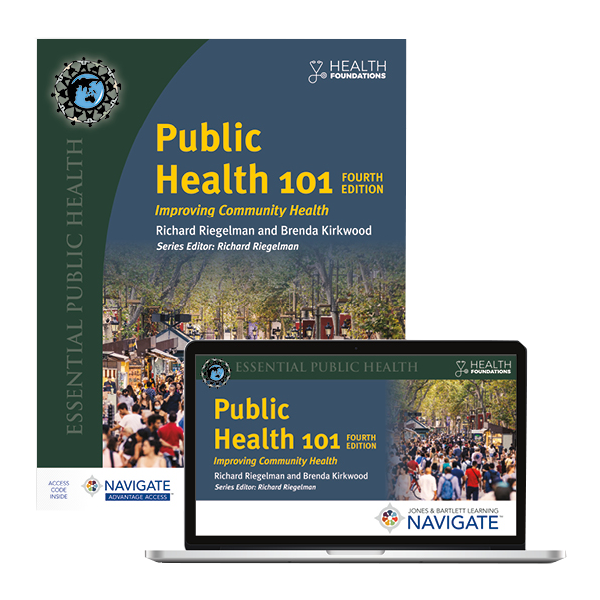Why Case Studies are Critical for Teaching Public Health

Whether you’re seeking to engage students in personal stories, challenge them to analyze complex problems, give them historical perspective, or get them to think about the future, case studies can be used to make it happen.
Case studies have been widely recognized as key educational methods for increasing student participation, demonstrating relevance of the material, as well as improving written and oral presentation skills and critical thinking skills.
I have developed and used case studies in my teaching of undergraduate public health for over 20 years. Read on to learn more about case studies, and why they’re so beneficial when teaching public health.
Case Studies and Public Health: A Breakdown
Case studies can be categorized as follows:
- Problem solving- using data and problem-solving frameworks to develop an approach to a public health issue
- Historical- putting current public health issues into a historical context
- Personalizing a public health issue- illustrating through individual stories how public health issues affect individuals
- Filling in a Framework- Illustrating and completing an organizing framework through a case study
- Predicting the Future- imaging the future state of health if we learn from, or fail to learn from, the past
In the fourth edition of Public Health 101: Improving Community Health, we have included over 35 case studies in the text as well as digital case studies on COVID-19, social determinants of health, and systems thinking. Among the new cases are the following that utilize each of the above approaches:
Folic Acid and Prevention of Spina Bifida- A problem-solving case study examining the research and implementation data on the impact of folic acid on prevention of spina bifida
Opioid Epidemics: A Recurring Crisis- A historical case study providing background on previous opioid epidemics and emphasizing what is different this time.
Athletic Head Injuries: They Happen Everyday- A personalized case study illustrating what can be done to prevent and address health injuries as well as the challenges to success.
WHO declares Monkeypox a Public Health Emergency of International Concern- A filling-in a framework case study using Monkeypox to illustrate the implementation of a pandemic prevention framework.
Pandemic 2030- A predicting the future case study illustrating how the next pandemic may be prevented or controlled utilizing what we have learned from COVID-19.
Each case study includes discussion questions. The Instructor’s Manual includes samples answers for these and most of the other case studies.

Understanding Frameworks
Case studies are key to understanding and applying frameworks. Frameworks can serve as structures for thinking that allow students to organize the large body of information they increasingly confront when learning new fields of study. Frameworks can help students integrate new information and address new problems as they arise years and even decades into the future.
Using case studies as an opportunity to try out new frameworks has been among the most successful uses of case studies. Public Health 101 has many case studies that illustrate the use of frameworks, for example: social determinants of health, evidence-base problem solving, stages of behavioral change, ideal criteria for screening for disease, types of coordination needed for health care, the 10 Essential Public Health Services, and steps in system analysis. These are included at the end of each section of Public Health 101.
How to Use Case Studies in Your Teaching
There are a wide variety of ways to use these case studies. One option for using the case studies is a “flipped classroom” format in which the case study and the discussion questions are assigned for reading prior to class and class time is devoted to addressing the discussion questions. Polls may be useful for introducing the issues raised in case studies and may serve to stimulate discussion about why students differ in their approaches or conclusions.
The discussion questions can serve several purposes. They can be used as the basis for a discussion led by the faculty. Alternatively, students can be divided into groups, with each group focusing on all or only a selected number of discussion questions, depending on the time available. The discussion questions may also serve as the basis for formal papers or an essay examination.
Case studies can also be used for asynchronous discussion sessions which are available on most online learning systems. Students’ contributions to a case study discussion can then be viewed and feedback provided. Case studies can be utilized for a range of available time slots including 15-to-20-minute small group discussions, extended in-class interactive sessions, and open ended online discussions.
Regardless of how you hope to use case studies and vignettes, you will find that they engage students, challenge them to think through problems, and help them to understand a range of perspectives from a diverse student body.
Public Health 101: Improving Community Health, Fourth Edition
As a cybersecurity educator, you don’t have to grow your program alone. In "Public Health 101: Improving Community Health, Fourth Edition by Riegelman and Kirwood, provides a big-picture, population perspective on the determinants of health and disease and the tools available to protect and promote health.
Request Your Review CopyRelated Content:
- The Population Health Primer Series and COVID-19: The Ultimate Population Health Challenge
- Using Monkeypox as a Case Study to Teach Pandemic Prevention
- COVID-19 Global Lessons Learned Interactive Case Studies
Related Products:
- Public Health 101: Improving Community Health, Fourth Edition
- One Health: From AIDS to Zika
- Population Health: A Primer
Richard K. Riegelman, MD, MPH, PhD is Professor of Epidemiology, Medicine, and Health Policy, and Founding Dean of the George Washington University Milken Institute School of Public Health in Washington, DC. His education includes an M.D. from the University of Wisconsin plus a M.P.H. and Ph.D. in Epidemiology from Johns Hopkins. Dr. Riegelman practiced primary care internal medicine for over 20 years. He is author of Public Health 101: Improving Community Health, Fourth Edition, Population Health: A Primer, and 2021 AJN Book of the Year in the digital category, COVID-19 Global Lessons Learned: Interactive Case Studies
